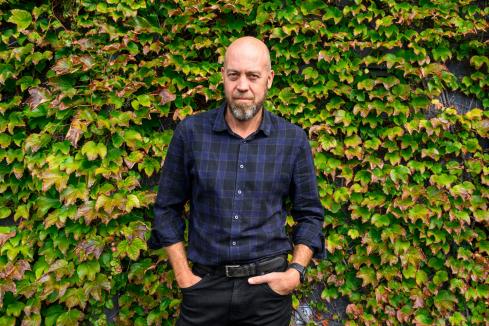

Directors and senior executives should lead the discussion on the health and wellbeing of employees as businesses continue to return to their work environments, writes Denise Cullen.
As Australians cautiously venture back to work, a nagging sense remains that although one catastrophe has been averted, another one looms. Although we have been spared the soaring death rates of other countries, COVID-19 has nonetheless created layers of population-wide trauma and disruption arising from the abrupt shutdown in March — and the associated social isolation, illness fears, burnout, financial stress and job insecurity.
Australian Bureau of Statistics data reveals about 600,000 Australians lost their jobs in April. Some hospitals report a sharp increase in significant injuries related to domestic violence, and Monash University research says 31 per cent of its respondents are experiencing severe psychological distress. The Monash study — of more than 1100 people in a range of industries either working from home, working less or who had lost jobs — also found a high proportion had turned to alcohol to cope. All of this suggests that lurking beneath our “back to normal” bonhomie, there is a dark twin beginning to stir, a shadow pandemic of mental health problems that will only coalesce as the adversities mount and stressors multiply.
The anxiety levels of many people are increasing rather than decreasing as lockdown restrictions ease, says Christine Morgan MAICD, CEO of the National Mental Health Commission.
“We’re living with a heightened level of uncertainty, all of us,” she says. “Some people are resilient to that and some people are not.”
Morgan points out that individuals who demonstrated resilience over the short term might still buckle under the strain of burdens imposed over six to nine months or longer. “What that does to our mental health and wellbeing is a really significant thing we need to look at,” she says.
Continuous disclosure
For executives, COVID-19 has piled new pressures onto existing ones, says Dawn O’Neil AM FAICD, managing director of Dawn O’Neil & Associates, ambassador for Fisher Leadership’s executive wellbeing program and a former CEO of both Beyond Blue and Lifeline Australia.
While it is an under-researched area, 2018 Bupa Global research revealed that 64 per cent of senior business leaders have suffered from mental health conditions, including anxiety, stress and depression — work often cited as a contributing factor. Because executives are used to being in the driver’s seat, they can tend to have an “overinflated view that they can manage their stress… or they’re very sacrificial in their approach and put themselves last”, says O’Neil.
The study found more than half of business leaders identified that it was difficult to discuss mental health problems. Factor in pandemic pressures and continuous disclosure requirements and it becomes all the more imperative that boards keep an eye on how executives are functioning. Cultivating a climate in which it is safe to disclose mental health vulnerabilities is critical. “We know that if people are able to get support, and get help early, they’re absolutely able to maintain high-demand, high-output jobs,” says O’Neil.
Peter Joseph AM FAICD is chair of the Black Dog Institute and The Ethics Centre, and a director of Tonic Health Media and the Mindgardens Neuroscience Alliance. He says that habits such as living in the present and letting go of elements outside one’s control are key for leaders during this time. He is hopeful the COVID-19 crisis may serve to destigmatise mental health issues.
“There’s a much greater embrace of the need to help people,” says Joseph. “The data on depression and mental illness and, sadly, suicide, is such that we cannot ignore them.”
Clear communication boosts trust
National mental health charity SANE Australia brought staff into planning discussions early, after projected fundraising losses placed many positions in peril. “We actually decided to go to staff at that point in time and tell them, ‘You know what? It could be really bleak’,” says SANE Australia CEO Jack Heath MAICD.
An overwhelming number of employees came forward with proposals to bring forward leave or reduce hours significantly, including the management team. The introduction of JobKeeper and additional COVID-19 funding has since buoyed the organisation.
Chair Marg O’Donnell AO says that the dividing lines between board and management have never been more blurred, with a degree of “enmeshment” necessitated by novel circumstances. She says board members have continued to play the role of “sounding boards, encouragers and questioners”, in terms of framing broader questions, and seeking evidence to support what management proposes to do. “It’s then about management coming up with the ideas and plans, and executing them,” she says.
Checking in
Morgan notes that while employers and directors differ in their capacities to absorb significant changes and offer flexible work options, most had done so and were demonstrating genuine concern about how their people were adjusting to radically changed circumstances. “It does seem to me that there is a more open discourse happening,” says Morgan. “I hear from many people that meetings start with, ‘How are you? How are you finding it? How are you coping?’ We’ve had almost a legitimisation that it’s stressful and difficult. The silver lining for this is that it is an opportunity for us to look at each other with slightly gentler eyes — to recognise that our mental health and wellbeing is critical.”
As we enter what may turn out to be a more challenging phase of this crisis, the simplest solutions may be most effective. Leadership, for instance, is a common domain shared by board members and executives — and should not be underestimated, says Morgan. Connectedness between chair and CEO also served to amplify a collective sense of security. “It’s that sense of ‘we’re in this together with you, but we’re leading from the top’,” she adds. The enormity of the problems faced, and those that lie ahead, are such that few people would not be “stressed, stretched and distressed” — so leaders should normalise those feelings. “Being able to say, ‘We get that, we feel it too, it’s OK, it’s normal — reach out for help and look after yourself’ is an incredibly important thing,” says Morgan.
Staying positive
One task for boards and management will be to maintain positivity as new pressures emerge. Joseph says there is considerable “imagineering” going on in boardrooms around the country as companies grapple with matters such as workforce mobility, staff entitlements and obligations. Also being reshaped is the world of work. In the future, this may well feature remote working arrangements, isolation rosters, reduced travel and frequent technology-mediated meetings. “It’s blown away the old ways of doing things,” says Morgan.
Directors should lead discussions on the pros and cons of working from home. What are the benefits in terms of greater flexibility and agility? What has been the impact on the culture of people not having incidental corridor conversations?
“This is a great place for boards to get alongside with the CEOs and their executive teams in envisioning what it could and should look like when we have been able to let go of some of those fears and constraints about people needing to be in workplaces,” says Morgan.
Both employers and employees could benefit by using this pause to construct a culture and an operating model that best fit the business or organisation, she adds. “We need to look at how we create mentally healthy workplaces — whether that be in the workplace or at home.”









